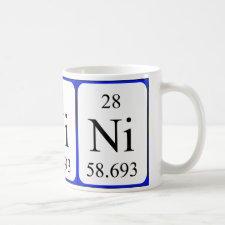
Authors: Yang B, Li JP, Zhang LM, Xu GB
Article Title: A molecularly imprinted electrochemiluminescence sensor based on the mimetic enzyme catalytic effect for ultra-trace Ni2+ determination.
Publication date: 2016
Journal: Analyst
Volume: 141
Issue: (20)
Page numbers: 5822-5828.
DOI: 10.1039/C6AN00926C
Abstract: A novel molecularly imprinted polymer (MIP) electrochemiluminescence (MIP-ECL) sensor was developed for the highly sensitive and selective determination of ultra-trace levels of Ni2+. The complex Ni2+-dimethylglyoxime (Ni-DMG) was chosen as the template molecule to construct the MIP and then acted as a mimetic enzyme to catalyse the oxidisation of luminol to enhance the ECL signal. When the imprinted cavities were occupied by Ni-DMG in the rebinding process, the ECL intensities produced by the luminol-H2O2 ECL system on the MIP-modified electrode surface increased with increased concentration of the Ni-DMG complex. The highly sensitive determination of Ni2+ was achieved through a catalytic reaction. This technique could be used for the quantitative analysis of Ni2+ with concentrations from 3.0 x 10-12 mol L-1 to 6.0 x 10-9 mol L-1. The detection limit was 1.01 x 10-12 mol L-1, which is much lower than that reported previously. In addition, the allowable amounts of interference ions in the MIP-ECL sensor were higher than that in other common molecularly imprinted sensors because of its excellent recognition of 3D cavity-to-complex molecules and ligand-to-metal ions. This method was successfully used to determine Ni2+ in real samples, such as apples, carrots and grapes, and has been proven feasible for practical applications
Template and target information: nickel ion, Ni(II)



Join the Society for Molecular Imprinting

New items RSS feed
Sign-up for e-mail updates:
Choose between receiving an occasional newsletter or more frequent e-mail alerts.
Click here to go to the sign-up page.
Is your name elemental or peptidic? Enter your name and find out by clicking either of the buttons below!
Other products you may like:
 MIPdatabase
MIPdatabase









